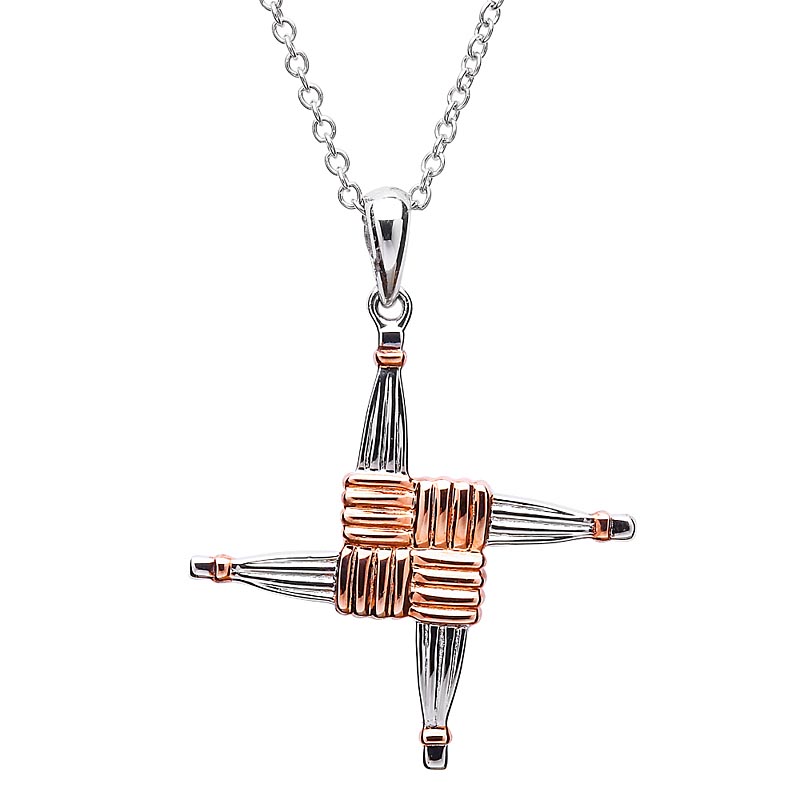Imbolc & St. Brigid: February’s Big Day
We are past the solstice and into a new year, albeit a strange one so far. January can feel very long and dreary. The weather isn’t great in the Northern Hemisphere, and the festivities of Christmas and New Year’s are fading fast. But if you have Irish roots, or just love Irish culture, you have not one but two holidays on the horizon. They share a day, but they are actually two separate occasions. February first is the day we celebrate both the ancient festival of Imbolc and St. Brigid’s feast day. Imbolc or Imbolg, also called Brigid’s Day, is an Irish and Gaelic traditional festival that marks the beginning of spring.
St. Brigid’s Day: Irish Jewelry and History
So if you are looking for Irish gifts related to the occasion, perhaps for someone with a February birthday, ancient Celtic designs or a St. Brigid’s cross are the motifs to choose.
Imbolc, Festival of Spring
Imbolc is the midway point between the winter solstice and the spring equinox. The ancient Irish considered it the first day of spring. They tracked the sun’s movements very carefully, and the solstices and equinoxes were extremely important to them. Newgrange, Lough Crew, and other monuments remain to remind us how deeply significant the sun was to them, which makes sense considering how dramatically the length of the day changes at this latitude.
Our ancestors gathered at the Hill of Tara to celebrate Imbolc, at a spot known as the Mound of Hostages. About 60 years ago, Archaeologists discovered this mound is a passage tomb. They found the remains of 250 men, women, and children there along with a sizable assortment of artifacts including Irish jewelry, weapons, and pottery. The items were dated back to a span of time from the Neolithic Age to the Early Bronze Age, showing that the site was in use for many generations. The Hill of Tara is a beautiful spot to visit with a commanding view of the surrounding countryside and a profound sense of history.
The Tara brooch, which has inspired countless Irish gifts, is actually unrelated to the Hill of Tara. Long ago, an Irish jewelry dealer gave it that name to increase its value.
See all of our St. Brigids Day: Irish Jewelry and gifts here
Ireland’s Other Patron Saint
While Patrick gets most of the attention, Brigid is also a patron saint of Ireland. And she has strong connections to Patrick, who baptized her mother before she was born and then baptized Brigid herself. Her mother was a slave, and her father was a pagan chieftain.
Two of the most famous legends about Brigid feature such a chieftain, but it isn’t clear if it is her father in either story. In the first, Brigid is seeking land to build her convent but the chieftain refuses. She then asks if she can just have as much land as her cloak can cover. Amused, he agreed. Then in a miracle, her cloak expanded to cover as much land as she needed to build her convent. In the other story, Brigid is at the bedside of a chieftain as he is dying. She is telling about Jesus and as she speaks, she weaves a cross from the rushes that cover the floor. The chieftain converts to Christianity before he dies, and that distinctive cross design is now used on pendants and other Irish gifts.
Brigid is associated with County Kildare, where she built her famous convent, although she was born in County Louth. In addition to being one of Ireland’s patron saints, Brigid is also the patron saint of midwives, single or abused mothers, poets, scholars, and sailors.
See all of our St. Brigids Day: Irish Jewelry and gifts here

